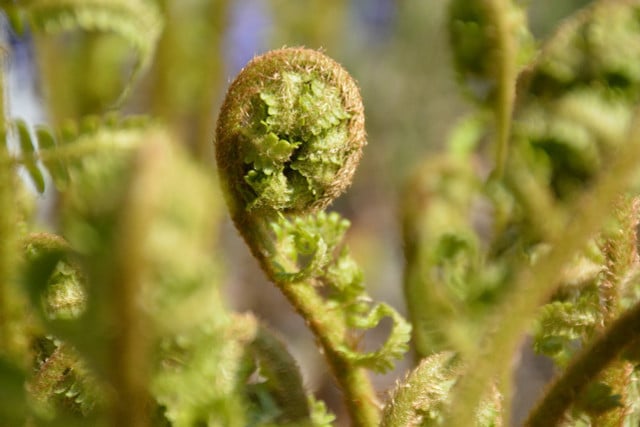
The bracken fern adorns forests and meadows around the world. Under certain conditions, the wild plant also grows in the garden. Here you can learn how to plant and care for it.
The bracken is a wild plant that grows all over the world. The plant grows in America as well as in Northern and Central Europe. Especially in rainy areas like Ireland or Scotland the fern is common.
The bracken fern feels especially at home in sparse forests and forest edges. The filigree plant takes its name from its slightly curled feathery shoots, which visually resemble eagle claws.
Contents
Special features of the bracken fern

With a size of up to two meters, the bracken is one of the largest fern species in our latitudes.
Similar to mushrooms, the bracken fern also has a rhizome, i.e. a widely branched shoot that survives the winter. This lies mainly under the ground. New above-ground shoots develop again and again from rhizomes.
What is special about bracken is that its rhizome can survive in the soil for several hundred years and develop new young fern shoots every year. As the useful plant database of the University of Marburg notes, rhizomes with a length of around 60 meters have even been found in Finland. Researchers estimate their age at up to 1,500 years. The rhizome of the bracken often forms a symbiosis with fungal tangles.
Bracken in the garden: what you should consider
Before you plant bracken, you should note that the plant is highly poisonous. Therefore, it is suitable as a garden plant only if there are no small children or pets in the garden. However, if there is no such danger, bracken blends well into a natural garden.
Once rooted, bracken ferns quickly form their extensive rhizomes underground. They also secrete toxic substances into the soil that can kill other plants. Therefore, bracken is absolutely not suitable as a bedding plant. Plant it better individually in a shady place under trees.
Tips for growing bracken
Bracken is easy to grow. You can get the young plants in a well-stocked garden center.
Here’s how to choose the right location:
- The woodland plant thrives best in partial shade locations, such as under trees or shrubs.
- Choose a spot where the plant will get some morning or evening sun.
- The soil should be loose, slightly humusy and low in lime.
- The optimal time to plant bracken is in the spring. Here’s how to do it:
Loosen the soil a bit.
Put the young plants into the soil together with some compost.
Water the bracken regularly and generously – especially shortly after planting.
Care for bracken

Once the bracken has settled down, it doesn’t need extensive care. However, there are a few things you should keep in mind:
- The bracken absolutely does not tolerate drought. Therefore, make sure that the soil is always slightly moist. You should avoid waterlogging.
- In autumn, sweep the leaves of the trees between your bracken ferns and let them weather there. This will provide the plant with important nutrients.
- In spring and fall, the fern will thank you if you also provide it with some compost.
- Old and withered fern fronds can be cut back for visual reasons.
Caution: Since all parts of the bracken fern are poisonous, you should always wear gardening gloves when planting and caring for the fern. Also avoid any contact with mouth, nose and eyes.


